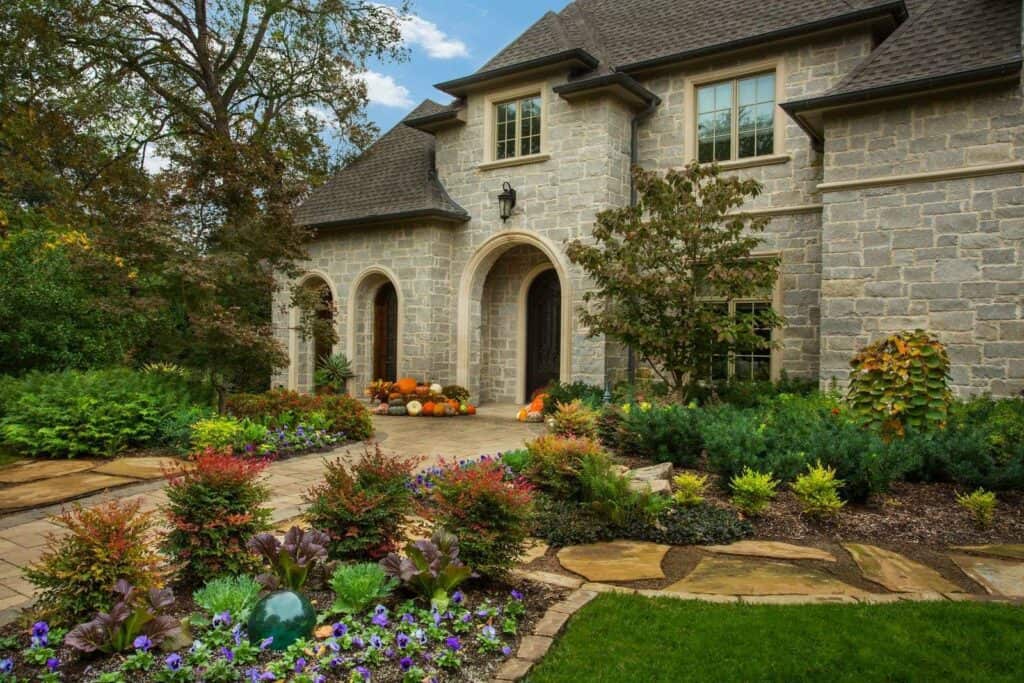The Greatest Guide To Landscape Design
The Greatest Guide To Landscape Design
Blog Article
All About Landscape Design
Table of ContentsFacts About Landscape Design UncoveredSome Known Incorrect Statements About Landscape Design Fascination About Landscape DesignHow Landscape Design can Save You Time, Stress, and Money.
Formal style motif. Debt: Gail Hansen, UF/IFAS The backyard is an expansion of the home where a variety of tasks occur. A yard can generally be divided into 3 areas: public (the front yard), personal (the back backyard), and solution (typically the side backyard). The area of task locations depends primarily on the kind of location, the dimension of room needed, the kind of activity, and the desired proximity to other activities and structures (Landscape Design).
The outside wall of your house usually works as the very first wall surface or starting point of an exterior room. Incompatible usages must be separated, and associated tasks, such as cooking and dining, must be put with each other to make the lawn extra reliable and satisfying. When using hardscape to develop spaces, make use of construction product similar to that used in the residence for continuity from your home into the yard.
Linked rooms. Debt: Gail Hansen, UF/IFAS Utilizing comparable hardscape functions and repeating plants draws the eye around the yard. Important factors along the means can be emphasized with plantings or features that attract focus and encourage movement in a certain direction. Relocating along the path takes an individual from one area to the following and permits the user to have a range of experiences.
This offers a feeling of enigma that promotes expedition and discovery of the landscape. From a design point of view, plant products have three significant functions in the landscape: visual, architectural and practical. Cosmetically, plants develop a visually positive atmosphere and structurally plants arrange and specify areas. Plants are utilitarian due to the fact that they can transform the environment for the convenience of the individual by customizing light, temperature and moisture.
6 Simple Techniques For Landscape Design
For emotional convenience plants are made use of as physical or suggested obstacles for privacy and safety. Physical obstacles block both the sight and accessibility to a space and include fences, walls and plant hedges.
Physical and suggested barriers. Credit Score: Gail Hansen, UF/IFAS For these factors, the sorts of plants to be made use of (such as trees, hedges, or groundcovers) need to be picked in the onset of preparation. Plant kinds are picked for their practical abilities to make sure that their future objective and called for space can be thought about at the very same time.
The above plane, the vertical plane and the ground airplane must all be thought about to produce enclosure. Once the shape of a plant bed has been developed, the plants ought to be massed (grouped) and split to attain aesthetic unity and the preferred amount of room. The dimension of a plant mass will depend upon the overall dimension of the backyard, the size of the specific plants in the mass, and the emphasis or influence wanted from the plant material.
Each plant mass is in front of, behind, or beside, one more mass. Number 11. Horizontal plant layers. Credit: Gail Hansen, UF/IFAS Number 12. Vertical plant layers. Credit History: Gail Hansen, UF/IFAS Repeating plants within a mass and repeating masses with similar plants links the garden together. The specific plant qualities need to be considered to successfully layer and mass plants.
Rumored Buzz on Landscape Design
All plant structures begin with the primary structure plants, the big, mostly evergreen background plants-such as the trees and huge shrubs. These plants different or enframe spaces, manage the size of the area, and give the starting factor for picking the suitable attributes of the 2nd layer, midground plants, for massing and infill.
Vital points in the yard ought to be highlighted by the use distinct plants, unique structures, or yard accessories. Noting limits or entries to rooms can check my source be made with entrances, arbors, and actions, or through the usage of unique and colorful plants. The form and/or style motif of the garden will usually assist identify the view essential factors and just how they should be highlighted.
Various other important areas in the lawn are focal points, which is made use of to visually organize a landscaped area. The type of focal point typically depends on the viewing viewpoint. Various viewpoints or perspectives can reveal different structures in the landscape that may call for a variety of focal points. Contrasting texture, shape, size and shade will certainly capture and hold the eye.
The Greatest Guide To Landscape Design
Plant kinds. Credit: Gail Hansen, UF/IFAS After kind, appearance is the next leading attribute of a plant; crude, tool and great appearances can be used for comparison and emphasis in the landscape.


The pleasant fragrance of plants, the sound of wind in the trees, the audio and texture of water, and the colors and textures of sculptures, pots and garden furnishings all include in the experience of the yard. One detail that is commonly forgotten is the result of light on the visual appeals of the plants.
The whole yard adjustments in feature and look over the program of the day, and the course of a year, as the light and temperature modification from morning to evening and season to period. Plant option should consider a plant's development rate, its mature size and kind, and the maintenance it will require.
It is crucial to understand the ultimate mature size of plants so they can be put in the right place and spaced effectively when they are mounted. Providing plants space article to grow is a difficulty since the usual mature size is typically based upon optimum expanding problems and the ecological conditions of a site might trigger a plant to grow bigger or remain smaller.
Report this page